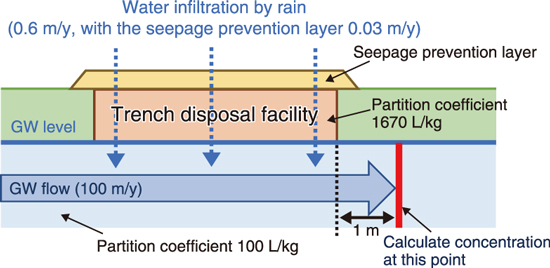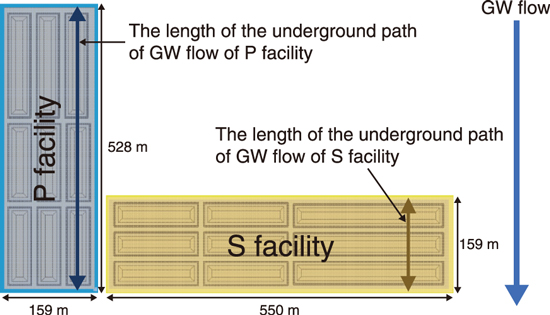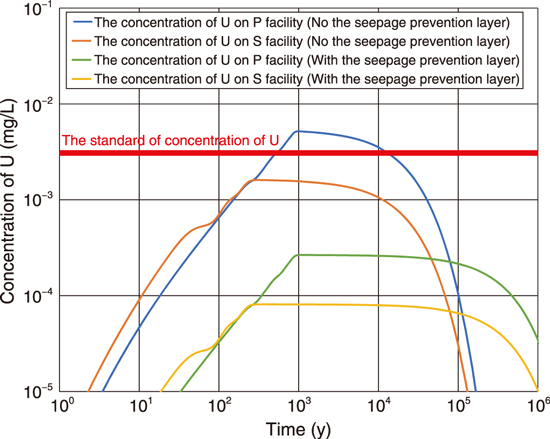
Fig.8-4 Image of uranium leaching from the trench disposal facility

Fig.8-5 Layout of the trench disposal facilities and direction of groundwater flow

Fig.8-6 Change in the concentration of U in groundwater leached from P and S facilities
The Radioactive Waste Disposal Center has planned the design of disposal facilities for radioactive wastes generated from research facilities, etc. Uranium (U), which is one of the major radionuclides contained in radioactive waste disposed of in our disposal facility, has the characteristics of chemical toxicity as a heavy metal. Therefore, we evaluated whether the weight concentration of U in the groundwater (GW) originating from the disposal facility conformed to the Japanese environmental standard to enhance the safety of the disposal facility.
The trench facilities are divided into two sections (P and S facilities) in the conceptual design of the disposal project. In this evaluation, U migrates from the trench facility into the GW because of the permeation of rainwater into the facility (Fig.8-4).The two facilities are perpendicularly located. Therefore, the lengths of the underground paths of GW flow are different for both facilities (Fig.8-5). U concentration in the GW at the point 1 m from the edge of the facility was evaluated by using the analysis code GSA-GCL2. The total disposal weight of U was calculated from the average concentration specified by the regulations, and the parameters were the same as those used in the dose assessment at the conceptual design.
The evaluation result showed that the U concentration in the GW originating from the S facility is less than half that in the GW from the P facility (Fig.8-6). In addition, in case of the trench facility equipped with the seepage prevention layer shown in Fig.8-4, it is seen that the maximum U concentration in the GW decreased to less than 1/10th. The U concentrations in the GW from both facilities were less than 0.002 mg/L–the Japanese environmental standard.
Thus, we realize the prospect of designing the trench facility so that the U concentration in GW meets the standard. However, due attention should be paid to the degradation of the artificial equipment because the duration of leakage of U is possible in the long term. This result will be important knowledge for the basic design of the trench facilities in the future.
(Rina Ogawa)
<Previous: 8 Research and Development on Fuel Reprocessing, Decommissioning, and Radioactive Waste Management | Next: 8-2>